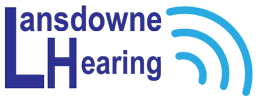Diagnostic Audiologic Evaluation
The evaluation starts with a consultation and then an otoscopic view of the ear canal and tympanic membrane (i.e. ear drum) to determine if there is blockage and possible conductive hearing loss. Then, various audiological tests are done to determine if there is a sensorineural (SNHL) hearing loss. When the type of hearing loss is determined, the Hearing Instrument Specialist now has audiologic data on the patient to determine the appropriate treatment recommendations.
How Many Tests Will Be Done?
The Hearing Instrument Specialist will perform otoscopy (physical examination of the outer ear and, ear canal and eardrum). The specific tests done will be determined after the consultation to understand the medical history, the conditions, and the hearing related concerns.
The minimum tests for the diagnostic audiologic evaluation will include the otoscopic (viewing of the ear canal and ear drum) exam, pure-tone testing, bone conduction testing, and speech (or word recognition) testing. All of the above tests will give the hearing professional an understanding of the condition and health of the ear canal and middle ear (behind the ear drum). They will also determine the level and type of hearing loss. The Hearing Instrument Specialist can then determine if the hearing loss is conductive or sensorineural depending on the location of the hearing loss (outer ear, middle ear, inner ear or central processing difficulty in the brain).
Pure-Tone Air And Bone Conduction Testing
Pure-tone air conduction testing begins with a headset placed on the client and tones of varying frequencies and volumes are presented to the client (from 250 Hz to 8,000 Hz). This is followed by bone conduction testing where a band-type headset is placed on the client’s head (behind the ear). From the bone conduction results, the Hearing Instrument Specialist can identify if the hearing loss is originating from the outer, middle or inner ear.
Word Recognition (or Speech) Testing
Since we speak in words and not tones, we need tests which help to identify how clearly you can comprehend conversations once the volume levels are changed to allow for the level of hearing loss. The result of this testing helps the Hearing Instrument Specialist to determine the type of hearing aids or hearing technology best suited for you.
What Happens at a Diagnostic Audiologic Evaluation?
All these tests will typically take about 30 to 45 minutes. This is followed by a review of the test results with the Hearing Instrument Specialist and answering of any questions that you might have.
If your loss determines that you need hearing aids, it could take 30 to 60 more minutes to discuss and show your options and hearing aids. We suggest that your family come with you for your evaluation as we believe your hearing loss affects your entire family. As Hearing Instrument Specialist we suggest you bring a family member or friend to the appointment in to discuss and understand all the results and recommendations.
In the beginning of your visit, a medical history will be discussed and the Hearing Instrument Specialist will want to hear about any issues you have about your hearing. We will note your hearing concerns, noise sensitivity, tinnitus (ringing in the ears), and vertigo or balance issues. It is important to understand if you are taking medications which might affect your hearing, tinnitus, and/or balance and vertigo.
This diagnostic audiologic evaluation starts the relationship with your Hearing Instrument Specialist so they can quickly assess your hearing situation. We are very thorough in our explanations and prompt you to ask questions as we want you to be an integral part in determining the best hearing solution that works for your lifestyle.
